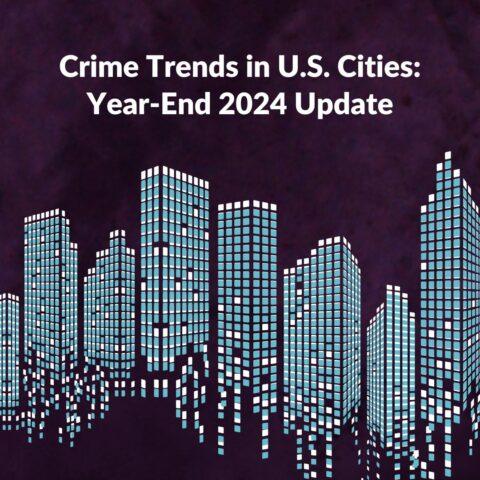As the nation reaches the midpoint of 2024, the Council on Criminal Justice has released its latest update on crime trends across major U.S. cities. This mid-year report offers a comprehensive analysis of shifting patterns in violent and property crimes, providing valuable insights into the effectiveness of law enforcement strategies and community interventions. With crime rates serving as a critical barometer for public safety and policy decisions, this update highlights emerging hotspots, noteworthy decreases, and ongoing challenges facing urban centers across the country.
Crime Rates Show Divergent Patterns Across Major U.S. Cities
Across the nation’s largest urban centers, mid-year crime statistics reveal a complex and varied landscape. While some cities report significant reductions in violent offenses, others are grappling with alarming increases, highlighting the localized nature of crime dynamics. For example, New York City has seen a 12% decline in overall violent crime compared to the first half of 2023, driven largely by a decrease in robberies and assaults. Conversely, Chicago faces a 9% uptick in homicides and aggravated assaults, pinpointing ongoing challenges despite intensified law enforcement efforts.
These divergent trends underscore the importance of tailored public safety strategies. Key factors influencing these patterns include socioeconomic disparities, community policing initiatives, and the efficacy of intervention programs. The table below summarizes notable shifts in major cities as of mid-2024:
| City | Violent Crime Change | Property Crime Change | Notable Factors |
|---|---|---|---|
| New York City | -12% | -5% | Community engagement & technology use |
| Chicago | +9% | +4% | Gang activity & resource constraints |
| Los Angeles | -7% | -8% | Increased patrol & youth programs |
| Houston | +6% | -2% | Economic stress & rising thefts |
Factors Driving Shifts in Violent and Property Crimes Explored
Recent analyses reveal a complex interplay of social, economic, and policy factors influencing violent and property crime rates across major U.S. cities. Economic volatility, including rising inflation and uneven job recovery, has exacerbated financial stress for many households, contributing to fluctuations in property crime, particularly theft and burglary. Concurrently, changing policing strategies‚ÄĒsuch as community engagement initiatives and targeted enforcement‚ÄĒhave had varying impacts on violent crime trends, with some cities reporting measurable declines while others face persistent challenges.
Additional factors driving these shifts include:
- Demographic changes: Urban populations are becoming younger, often correlating with higher risk of violent offenses.
- Access to firearms: Policy disparities at state and local levels continue to shape violent crime dynamics.
- Technological advances: Surveillance and data analytics are improving crime detection but also sparking debate about privacy.
- Social services: Increases or cuts in funding for mental health and addiction programs significantly impact crime patterns.
| Factor | Impact on Violent Crime | Impact on Property Crime |
|---|---|---|
| Economic Stress | Moderate Increase | High Increase |
| Policing Strategies | Variable Decrease | Variable Impact |
| Demographic Shifts | High Increase | Low Impact |
| Firearm Accessibility | High Increase | Minimal Impact |
| Social Services Funding | Moderate Decrease | Minimal Impact |
Community Policing Strategies Linked to Local Crime Reduction Successes
Recent analyses indicate that cities implementing tailored community policing initiatives are reporting significant drops in crime rates, particularly in violent and property crimes. These strategies prioritize building trust between law enforcement and residents through sustained engagement, transparency, and collaborative problem-solving. Noteworthy practices include deploying dedicated neighborhood officers, increasing foot patrols, and utilizing community feedback to identify hotspots and tailor responses effectively.
- Increased local partnerships: Collaboration with schools, businesses, and faith-based organizations fosters community resilience.
- Focus on youth outreach: Mentorship programs and recreational activities have been linked to reductions in juvenile delinquency.
- Enhanced use of data-driven policing: Real-time crime mapping allows for efficient resource allocation.
| City | Community Strategy | Crime Reduction (%) |
|---|---|---|
| Springfield | Neighborhood Watch Expansion | 18% |
| Riverton | Youth Engagement Programs | 23% |
| Lakeside | Data-Driven Patrol Shifts | 20% |
Policy Recommendations for Sustained Crime Prevention and Public Safety
To effectively address the evolving landscape of urban crime, policymakers must prioritize evidence-based strategies that emphasize both prevention and community trust. This includes expanding funding for youth engagement programs, mental health services, and job training initiatives aimed at reducing socioeconomic disparities that often correlate with criminal activity. Embedding community voices into public safety planning is essential for sustainable outcomes, ensuring interventions are culturally sensitive and tailored to local needs.
- Invest in technology-driven crime analysis for proactive policing.
- Enhance training focused on de-escalation and bias reduction.
- Support restorative justice models to decrease recidivism.
- Strengthen partnerships between law enforcement and social services.
Clear metrics must be established to periodically assess the effectiveness of implemented policies. The following table outlines key indicators that should guide ongoing evaluation efforts:
| Indicator | Target Outcome | Measurement Frequency |
|---|---|---|
| Violent Crime Rate | Decrease by 10% annually | Quarterly |
| Community Satisfaction with Police | Increase to 80% positive feedback | Biannual |
| Recidivism Rate | Reduce by 15% over two years | Annual |
The Conclusion
As mid-year data continues to emerge, the evolving landscape of crime in U.S. cities remains a critical focus for policymakers, law enforcement, and communities alike. The Council on Criminal Justice’s latest update underscores the complexity of trends shaping public safety in 2024, highlighting areas of both progress and ongoing challenges. Continued analysis and targeted interventions will be essential to addressing the underlying factors driving crime, ensuring that strategies remain responsive and effective as the year progresses. Stakeholders will be closely watching these developments as cities adapt to the shifting dynamics of crime in the months ahead.







